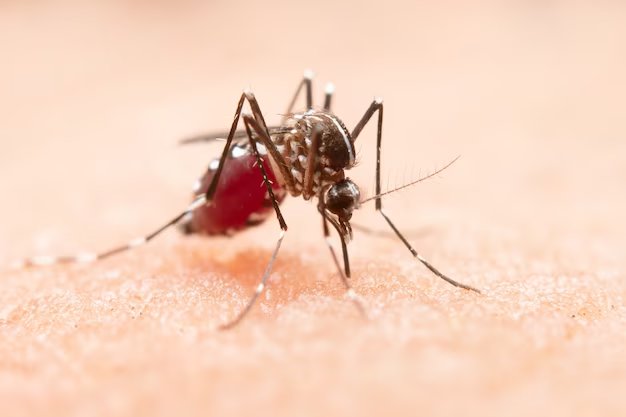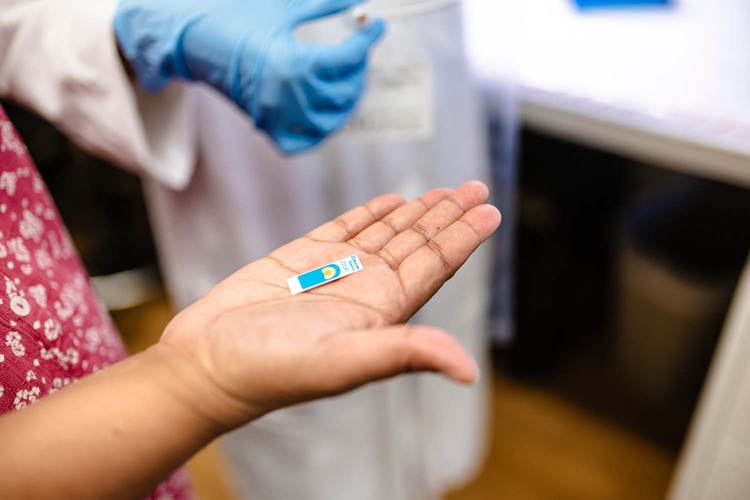Novel Noninvasive Test Detects Malaria Infection without Blood Sample
Posted on 07 Aug 2023
Malaria which poses a significant global health challenge is currently diagnosed using two methods. The traditional approach involves examining blood smears under a microscope, but due to resource and expertise requirements, many regions are transitioning to rapid antigen blood tests. However, both methods lack the required sensitivity. Now, an innovative noninvasive test utilizing lasers and ultrasound shows promise as a more sensitive testing alternative for malaria.
A research team co-led by Yale School of Public Health (New Haven, CT, USA) is creating two improved prototypes of their cytophone testing platform that will undergo extensive field tests in Burkina Faso, a West African nation where malaria is endemic. Their work builds upon an earlier nonportable prototype designed to detect circulating melanoma cells non-invasively. The new portable version aims to detect malaria infections in people living in endemic areas and aid malaria interventions in Africa.

The cytophone technology employs lasers of specific wavelengths directed at superficial blood vessels. Malaria parasites, upon entering red blood cells, liberate amino acids using hemoglobin. This process releases hemozoin, a compound containing iron. Upon being hit by a laser, hemozoin absorbs more of the energy than hemoglobin, leading to greater energy absorption in malaria-infected cells. As a result, acoustic waves are generated due to heat expansion that is detected by the cytophone technology using a small ultrasound transducer placed on the skin. Through software analysis, peaks in the acoustic waves can identify malaria infections.
Previous studies have demonstrated the device's ability to identify infections in mice using rodent species of malaria parasites and in human blood infected with malaria parasites. Subsequently, a portable version of the device was developed, and a proof-of-concept study was conducted on malaria-infected adults in Cameroon, yielding promising results. However, some unanswered questions remained, prompting the need for improvements in durability, precision, and operational complexity. The researchers also intended to extend their clinical work to study asymptomatic infections, including those in children.
Using a USD 500,000 grant received from the Gates Foundation, the research team plans to build two new, smaller, and more advanced prototypes of the device. These upgraded versions will incorporate improved ultrasound, laser, and software processing capabilities. In collaboration with partners in Burkina Faso, the team will conduct clinical studies to validate the technology's effectiveness in diagnosing malaria in both infected and uninfected adults, including school-aged children with symptomatic malaria. The aim is to fine-tune the device to ensure accurate data acquisition and understand potential causes of false positive or negative results. Ultimately, this technology could lead to significant advancements in diagnosing, treating, and comprehending malaria, as it has the potential to be far more sensitive than current diagnostic tests.
Additionally, the cytophone technology could address an emerging issue with certain antigen tests. In Africa, common antigen tests target an antigen found in Plasmodium falciparum, the most dangerous of the five species of malaria-causing protozoa. However, researchers have encountered parasites with deletions of this antigen, which compromises the accuracy of such tests. Since the cytophone relies on hemozoin, a marker produced by all species of malaria parasites during their life cycle, it avoids this problem. Moreover, the technology's focus on hemozoin could aid researchers in developing and studying new antimalarial drugs targeting this pathway in humans, noninvasively, which is crucial for combating parasite resistance to medications in the long run.
Related Links:
Yale School of Public Health














